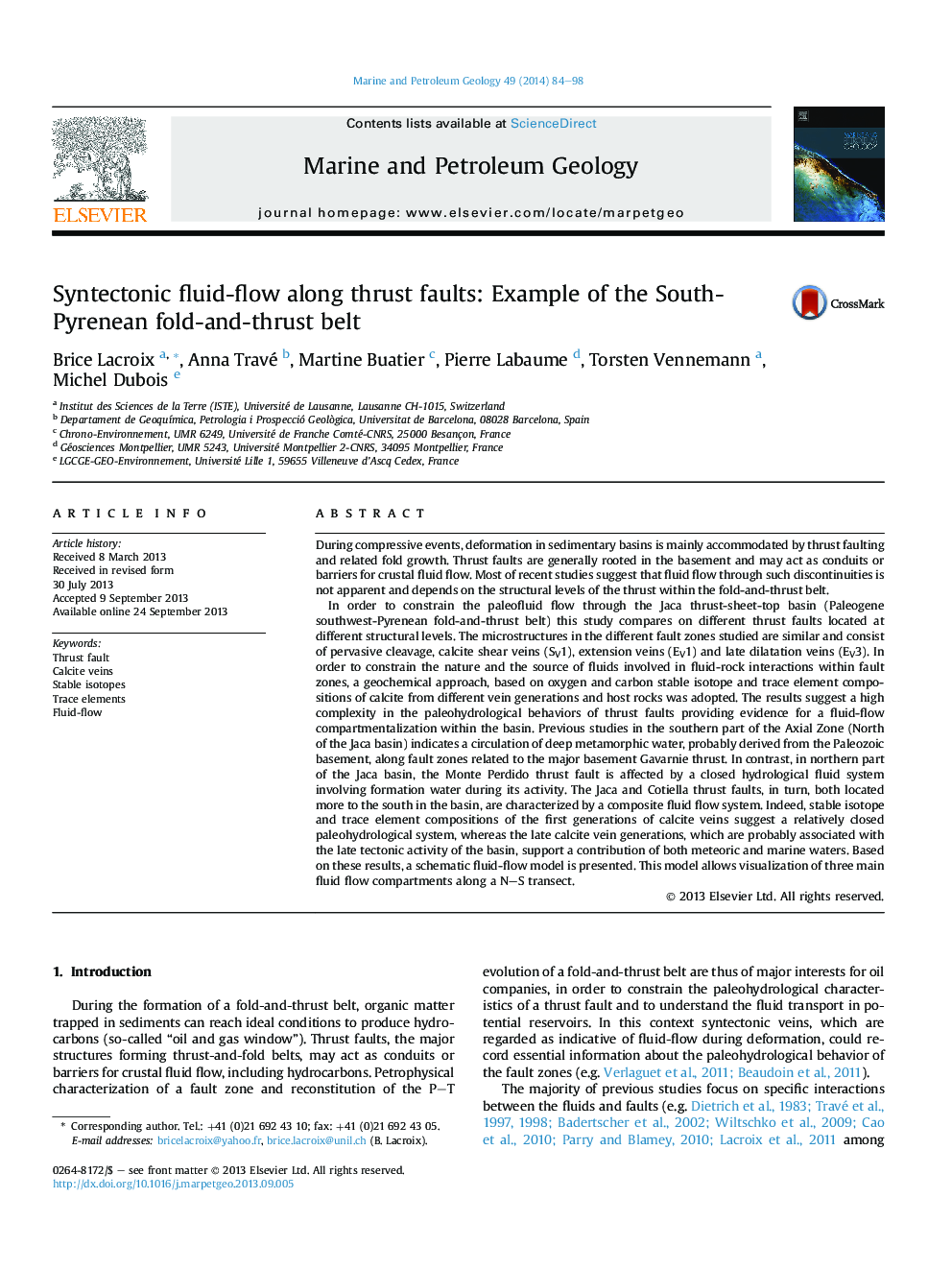| Article ID | Journal | Published Year | Pages | File Type |
|---|---|---|---|---|
| 4695791 | Marine and Petroleum Geology | 2014 | 15 Pages |
•Microstructural characterization of two thrust faults from the Jaca–Ainsa basins.•Geochemical analyses on calcite veins, fault zones and host sediments.•First stages of fault activity involve local fluids.•Fluid system became opened during late fault activities.•Compartmentalization of fluid flow along the South Pyrenean fold-and-thrust belts.
During compressive events, deformation in sedimentary basins is mainly accommodated by thrust faulting and related fold growth. Thrust faults are generally rooted in the basement and may act as conduits or barriers for crustal fluid flow. Most of recent studies suggest that fluid flow through such discontinuities is not apparent and depends on the structural levels of the thrust within the fold-and-thrust belt.In order to constrain the paleofluid flow through the Jaca thrust-sheet-top basin (Paleogene southwest-Pyrenean fold-and-thrust belt) this study compares on different thrust faults located at different structural levels. The microstructures in the different fault zones studied are similar and consist of pervasive cleavage, calcite shear veins (SV1), extension veins (EV1) and late dilatation veins (EV3). In order to constrain the nature and the source of fluids involved in fluid-rock interactions within fault zones, a geochemical approach, based on oxygen and carbon stable isotope and trace element compositions of calcite from different vein generations and host rocks was adopted. The results suggest a high complexity in the paleohydrological behaviors of thrust faults providing evidence for a fluid-flow compartmentalization within the basin. Previous studies in the southern part of the Axial Zone (North of the Jaca basin) indicates a circulation of deep metamorphic water, probably derived from the Paleozoic basement, along fault zones related to the major basement Gavarnie thrust. In contrast, in northern part of the Jaca basin, the Monte Perdido thrust fault is affected by a closed hydrological fluid system involving formation water during its activity. The Jaca and Cotiella thrust faults, in turn, both located more to the south in the basin, are characterized by a composite fluid flow system. Indeed, stable isotope and trace element compositions of the first generations of calcite veins suggest a relatively closed paleohydrological system, whereas the late calcite vein generations, which are probably associated with the late tectonic activity of the basin, support a contribution of both meteoric and marine waters. Based on these results, a schematic fluid-flow model is presented. This model allows visualization of three main fluid flow compartments along a N–S transect.
